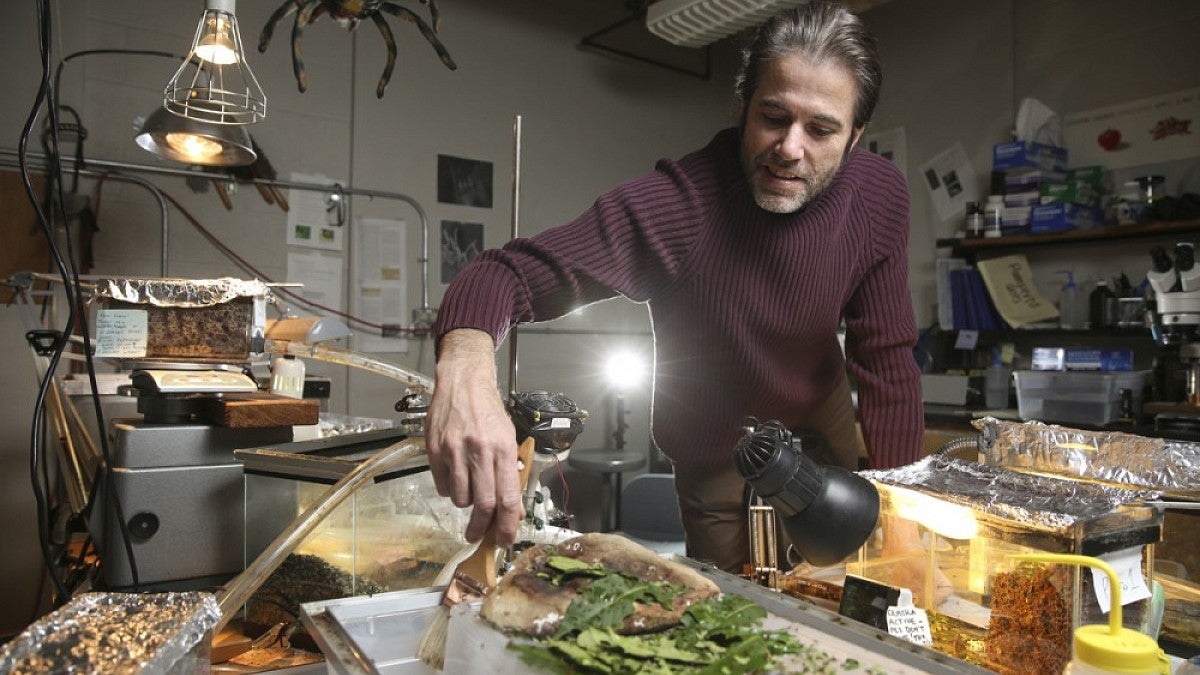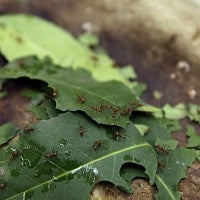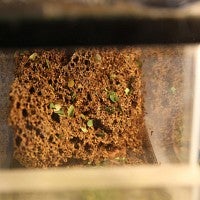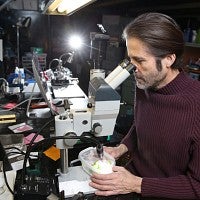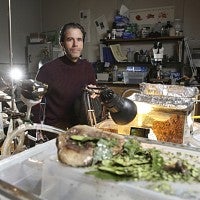Leafcutter ants are agricultural pests that range from the southern United States through much of South America. Their complex societies rely on a division of labor inside and outside their underground nests.
Studying them, says University of Oregon scientist Robert M.S. Schofield, not only leads to ways to reduce the damages they and their often-massive nests cause but also provides nature-based insights that could prove helpful to efforts to manufacture tiny machines and tools.
The latest findings from Schofield's lab appeared in a paper placed online Jan. 27 in Royal Society Open Science, an open journal that quickly publishes research across multiple disciplines.
In the study, Schofield's six-member team — using multiple videos with each capturing one aspect of the ants' work — documented never-before-seen looks at the ants' prehensile skills — they're good at grabbing — and the layers of behaviors associated with gathering leaves, delivering them to the nests and processing them to grow the fungus that colony members eat.
"We show that the many-jointed leg tips, or tarsi, of ants can be prehensile, like many-jointed human fingers, grasping and manipulating work pieces with precision," said Schofield, a research professor in the UO Department of Physics. "The ants are remarkably handy, often using three legs as a tripod to stand on and the other three legs to handle leaf pieces as they cut, scrape, lick, puncture and chemically treat them. When the processing is complete, the ants rock the leaf fragments into the comb, much like stonemasons building a wall."
Accompanying videos — shot during more than 70 hours of observations in a leafcutter colony in Schofield's UO lab — helped the researchers details their findings on how leafcutters hold, lick, scrape, cut and puncture the leaves they use. The study found that the ants are selective, choosing leaf pieces that are small and easy for them to transport, and that 90 percent of processing takes place in their nests.
Schofield's team also analyzed the cutting, carrying and preparation of the leaves done by the ants to understand their energy expenditure. Much of this analysis involved fieldwork at leafcutter sites in Colombia and Ecuador.
The task-shared process, the researchers conclude, suggests that energy conservation and the ants' division of labor are important to the overall health and survival of the ants.
Schofield's five co-authors were former UO undergraduate students Ryan W. Garrett, who was supported by the McNair Scholars Program and a Gilman scholarship, Katherine A. Carlson and Christopher Shepard; Matthew S. Goggans, a courtesy research assistant in the UO physics department; and Michael H. Nesson of Oregon State University. All of the undergraduate students have since graduated.
— By Jim Barlow, Public Affairs Communications


